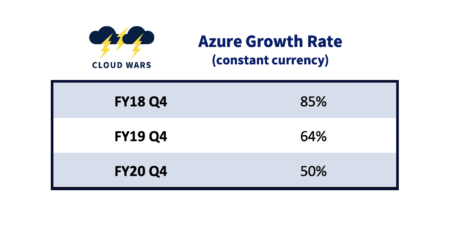So your organization has decided to take the plunge and invest in a cloud service provider (CSP): Microsoft Azure. Maybe this is voluntary or alternatively through mergers and acquisitions, but the fact remains the same: Azure is likely an extension to your organizations’ on-premises enterprise network. Whether your organization is configured for a hybrid (cloud/on-premises) or completely cloud-native architecture, there are extensive security considerations. Azure is a fast-moving train; the technologies, services and integrations are constantly changing. Cloud service adoption rates are increasing, and an understanding of the Azure services, architecture, and security is critical. We’ll discuss many of the core security features and considerations that are fundamental tenets of a secure Azure environment. Additionally, we will touch on a business continuity strategy in the event federation fails or on-premises service is no longer available. It is an ambitious topic, but one that will help you better approach and prioritize your Azure hardening initiatives.
Search Results: Azure (659)
Learn how to set up and use the Demand Forecasting functionality in D365 for Finance and SCM. We will talk through the algorithms available for forecasting and how you can tweak the settings and control the machine learning project. We will also discuss examples of how to extend the functionality and bring more life to your machine learning project. Learning Objectives: understand Time series models and algorithm parameters needed for statistical forecasting in D365; understand how to use Forecast models for forecast comparison and analysis; define how forecast models can be used to feed plans and fulfill an S&OP process.
The content of this session is geared toward an audience with intermediate to advanced-level knowledge of the subject area.
This session will be available for CPE credits pending completion of session survey post event.
With the release of Azure Data Lake and surrounding technologies, it is easy to see why there is hope within the AX and F&SCM communities for a better reporting solution than BYOD. Attend this session to gain a fundamental understanding of what an ADL project may entail, its time frame, estimated cost, and the resulting reporting options available to finance teams to make meaningful business decisions. It’s always best to have clear visibility and understanding of the full implementation cycle before making an investment in a new technology.
Luck Stone needed to save customer invoices that are automatically generated during the posting process in D365FO to their Customer Portal. They needed a solution without heavy customization, resistant to Microsoft monthly updates, but also seamlessly integrated with Print Management. Additionally, they wanted to utilize Azure Event Grid which supports Azure blob storage events. The problem was, how to automate saving invoices from D365FO to an external Azure blob storage and trigger Azure Event Grid. Luckily, they found a simple solution! By attending this session you will learn all about it and be able to apply it in your D365FO implementation.
The content of this session is geared toward an audience with beginner to intermediate-level knowledge of the subject area.
This session will be available for CPE credits pending completion of session survey post event.
How do you expand reporting when your GP SQL server is overloaded? Set up a new server…isnt that costly? What if it was less than $100/month? Don’t we need a SQL DBA? No, with Azure Data Factory it’s easy for a business analyst with intermediate SQL skills to copy tables, transform data, and build sophisticated workflows. Power Platform offers similar capabilities, but you might need a full database where you can build views and stored procedures.
In this session, we will walk you through the process of installing a gateway and programming all the logic from the Azure portal.
This session is geared for an audience with an intermediate skill set.
This session will be available for CPE credits pending completion of session survey post event.
Join EasyTerritory Co-founder, Benton Belcher, for an engaging session showcasing how to build immersive reports and dashboards for territory management using Power BI and the Azure Maps-based EasyTerritory Territory Map Visual. We’ll explore strategies for building optimizes territories in EasyTerritory Azure App, and publishing the results to Power BI for sharing and collaboration across the enterprise.
This demonstration will provide key concepts of Logic Apps for integration requirements, and how they work with Dynamics 365 Finance/Supply Chain.
The content of this session is geared toward an audience with beginner to intermediate-level knowledge of the subject area.
This session will be available for CPE credits pending completion of session survey post event.
In this session learn how to design and deploy external-facing enterprise portal solutions using Power Apps Portals, Azure, and Microsoft 365.
See how organizations are creating a secure framework for customers, partners, and employees to access Microsoft 365 content today.
Learn patterns for extending your existing Microsoft 365 and Azure apps and data with secure portals, anonymous portals, or a hybrid approach.
Session Level: Advanced
This presentation will take the audience through how to use a combination of Azure machine learning, Power Apps and key D365 for Finance and Supply Chain features to mange and improve food safety. We will cover both how to manage quality control on the production floor or at the receiving dock using Power Apps, predicting quality issues using Azure ML, and how to log and manage non-conformance via D365FSC, Power BI and Power Apps.
The content of this session is geared toward an audience with intermediate to advanced-level knowledge of the subject area.
This session will be available for CPE credits pending completion of session survey post event.
In today’s work environment, the cloud gives more people access to solutions from a variety of devices. Users complain of multiple log-in requirements. In this session, you will learn how to implement a Single Sign On in the Azure Cloud, along with other ways to consolidate identities across the board for your various servers while still maintaining a secure environment.
This session will be available for CPE credits pending completion of session survey post event.
Level: Basic
Do you sometimes feel overwhelmed when it comes to choosing “the” Microsoft tool to use for your analytics projects? Join this session to learn about various options for data movement and integration in order to employ the right analytics strategy for you. Topics covered will include Power BI Dataflows, Azure Data Factory, Azure Synapse, Azure Stream Analytics and more. Select live demonstrations will be used to illustrate use cases.
• Discover the use case for different available tools
• Examine the components and architecture options for different approaches
• Appreciate the benefits and drawbacks of each option
The content of this session is geared toward an audience with beginner to intermediate-level knowledge of the subject area.
This session will be available for CPE credits pending completion of session survey post event.
This session is going to address using Azure hosted agents to create builds. We can automate the process of building X++ code and creating deployable packages on any build agent that runs on Microsoft Windows. We will address the following topics:
– Prerequisites required for setup
– Preparation required in Azure DevOps
– Configuration of pipelines
-Limitations
The content of this session is geared toward an audience with intermediate to advanced-level knowledge of the subject area.
This session will be available for CPE credits pending completion of session survey post event.
Some companies rush to deploy using the Microsoft Cloud offering because it is perceived as a quick and easy option. However, this may not be the best solution. In many cases, the on-premises option in Azure can offer lower costs and more control of the solution. Join us for this session where we’ll discuss the pros and cons of using the Business Central SaaS/Cloud model and the on-premises subscription model hosted in Azure.
A few reasons why I believe that Satya Nadella and the Microsoft executive team are extremely pleased with continued hyper growth from Azure.
As Microsoft cloud revenue soared to $51B on the strength of $14.3B in fiscal Q4, Azure led the way as usual with 50% hypergrowth. But there’s more!
Here’s what stood out to me in Microsoft Azure CTO Mark Russinovich’s latest blog post about how the team is boosting Azure reliability.
Microsoft Azure has become more popular than Amazon’s AWS as the public-cloud infrastructure of choice, according to a Goldman Sachs survey of 100 CIOs.
Microsoft CEO Satya Nadella posted an intriguing video on LinkedIn this week extolling the virtues of what he called a “hyperscale limitless database.”
The Microsoft & UBS deal is indicative of how the rapid spread of cloud-availability regions is enabling global corps to accelerate digital transformation.
LinkedIn choosing to move its 645 million users to Azure poses some interesting questions. Ex: what features of the Microsoft cloud convinced LinkedIn?




















